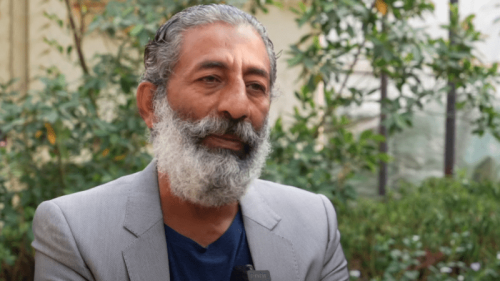ISLAMABAD: The Japan Foundation, in collaboration with the Embassy of Japan in Pakistan and the Pakistan National Council of the Arts (PNCA), presented a superb collection of Japanese dolls, in an exhibition titled ‘The Dolls of Japan - Shapes of prayer, Embodiments of Love’ at the National Art Gallery.
Japanese ambassador Hiroshi Inomata inaugurated the exhibition which will remain open for public viewing till the end of the month.
The world of Japanese dolls or Ningyô is still largely unfamiliar to the world outside of Japan but within Japan, these dolls have played important cultural roles that go far beyond the typical Western notion of dolls as toys. Traditional Japanese dolls have been used over time for every purpose from national festivals, purification rites, medical applications, theatrical endeavours, to important gifts of State and supplications and prayers.
 |
Ambassador Inomata said: “Until recently, I did not even think about the significant role being played by dolls in Japanese culture. Dolls have been important to the Japanese culture for centuries.
They reflect the history of Japan from prehistoric to modern times. In Japan, over the past millennia, the making of human figures has been popular in different ways, such as the talisman, the sacred object, the souvenir and the plaything.
Dolls, for the Japanese, have spiritual significance; they seal friendships, protect or purify those who use them, and some are ornament to celebrate young girls and boys at special occasions in praying for their future success and prosperity.”
 |
He went on to explain that “they may be made of wood, reeds, paper, pottery, or even ivory, and dressed in the finest cloth, often woven or painted especially with appropriately tiny motifs. Dolls made in this traditional way are not only very beautiful and popular, but they are also considered valued treasures among collectors.”
More than 70 dolls have been sent by the Japan Foundation for the exhibit, representing the wide range of styles and forms that have evolved over the 13,000 years that dolls have been central to Japanese culture.
The Japanese word for the dolls is Ningyô which essentially translates in human shape and is therefore more than the doll but an anthropomorphic representation of something more.
Of the range of dolls brought to the exhibition, each type reflects the customs of Japan and the aspirations of its people, possesses distinctive regional attributes, and so on. They are also an admirable showcase for traditional Japanese craft products, such as textiles.
 |
Ambassador Inomata said: “The purpose of showcasing this exhibition is to give the visitors a close glimpse of the versatility and individuality of the traditional and cultural life of Japanese people through these artistic handmade objects.”
He added: “As no matter how much progress we make in the world through our up-to-date machines and robots, we Japanese, still keep intact with our traditions and values and these handcrafted dolls are still significant for us today as they were for our ancestors.”
Uxi Mufti, the renowned Pakistani folklorist, social scientist, cultural expert of repute and author of many books including ‘Measuring the Intangible’, was also present at the exhibition.
He said: “We are familiar with some Japanese art forms, such as Ikebana and Kabuki, but we do not realise how deeply connected Japanese culture is with nature and beauty.”
He expressed his delight at the Embassy’s commitment to share the experience of various Japanese art forms with the people of Pakistan.
The exhibition itself was delightful and drew in crowds of people, a few of them children. With the display ranging from the ‘Hina Ningyo’ and ‘Gogatsu Ningyo’ to theatre dolls and imperial palace dolls, the viewers were fascinated by the diversity of the types and the intricacy with which each had been made.
While human figurines can be traced to ancient Japanese rituals, it wasn’t until the Edo Period (1604-1868) that dolls truly flourished in Japan.
Two rituals that have survived time, are the ‘Hina Matsuri’, also known as the Girls’ Day Festival or the Japanese Doll Festival, held on the third day of the third month, where dolls are floated down the Takano and Kamo rivers before being burnt at the temple, and the holiday, ‘Tango no Sukku’, or Boys’ Day Festival, celebrated on the fifth day of the fifth month, which essentially romanticises the warrior spirit.
Another type of doll that survives to date is the ‘Gosho Ningyo’ or the palace doll. These dolls, traditionally carved of wood and enamelled, are shaped like chubby toddlers with bright white skin and thick black hair, often only wearing a bib. With their tiny features on slightly oversized heads, the gosho dolls allude to the innocence of childhood.
As gosho have evolved, their wardrobes have come to include kimonos and other bits of clothing and accessories.
Eventually, simplified Japanese dolls also became pure playthings for children. This has not, however, diminished the value of the collectors’ pieces and the ningyo contribute significantly to the Japanese economy.
Published in Dawn, January 8th, 2015
On a mobile phone? Get the Dawn Mobile App: Apple Store | Google Play
















































Dear visitor, the comments section is undergoing an overhaul and will return soon.